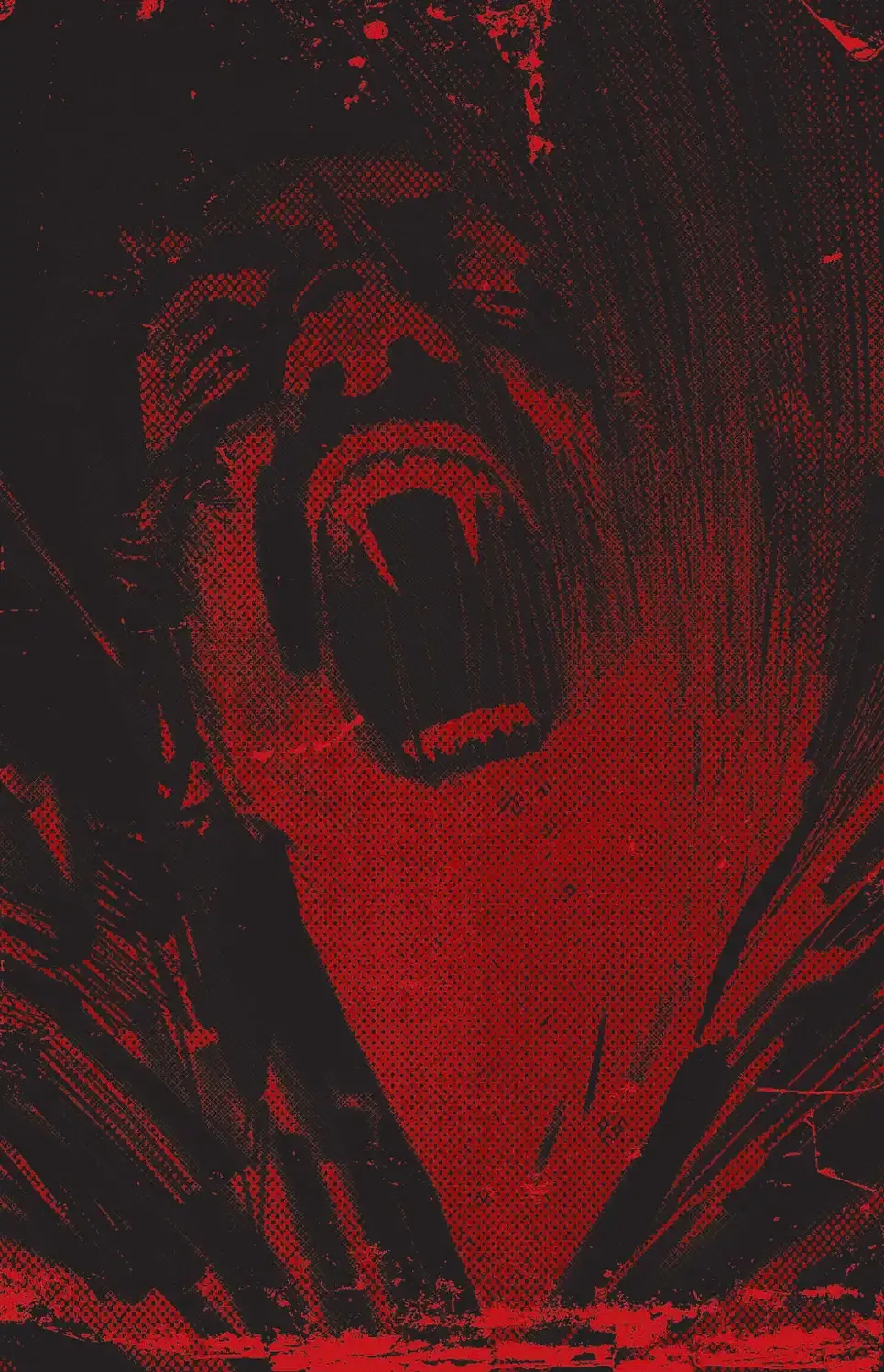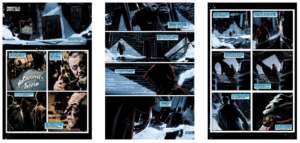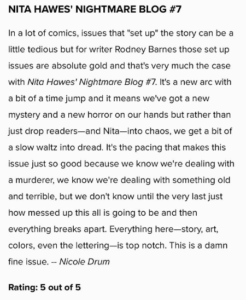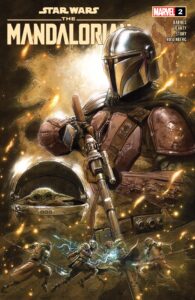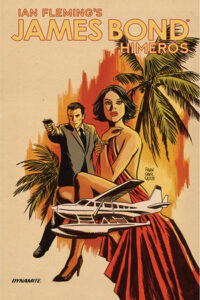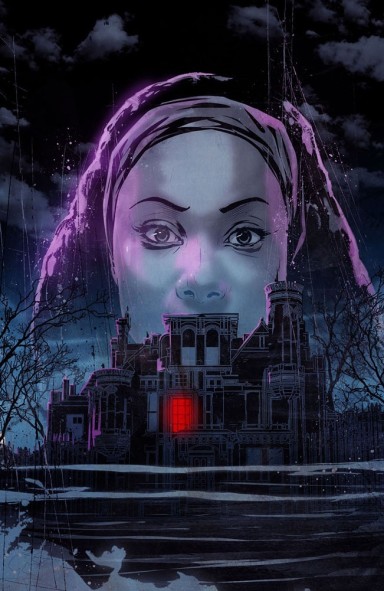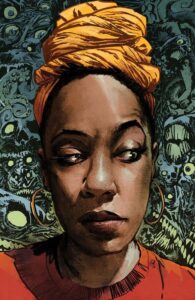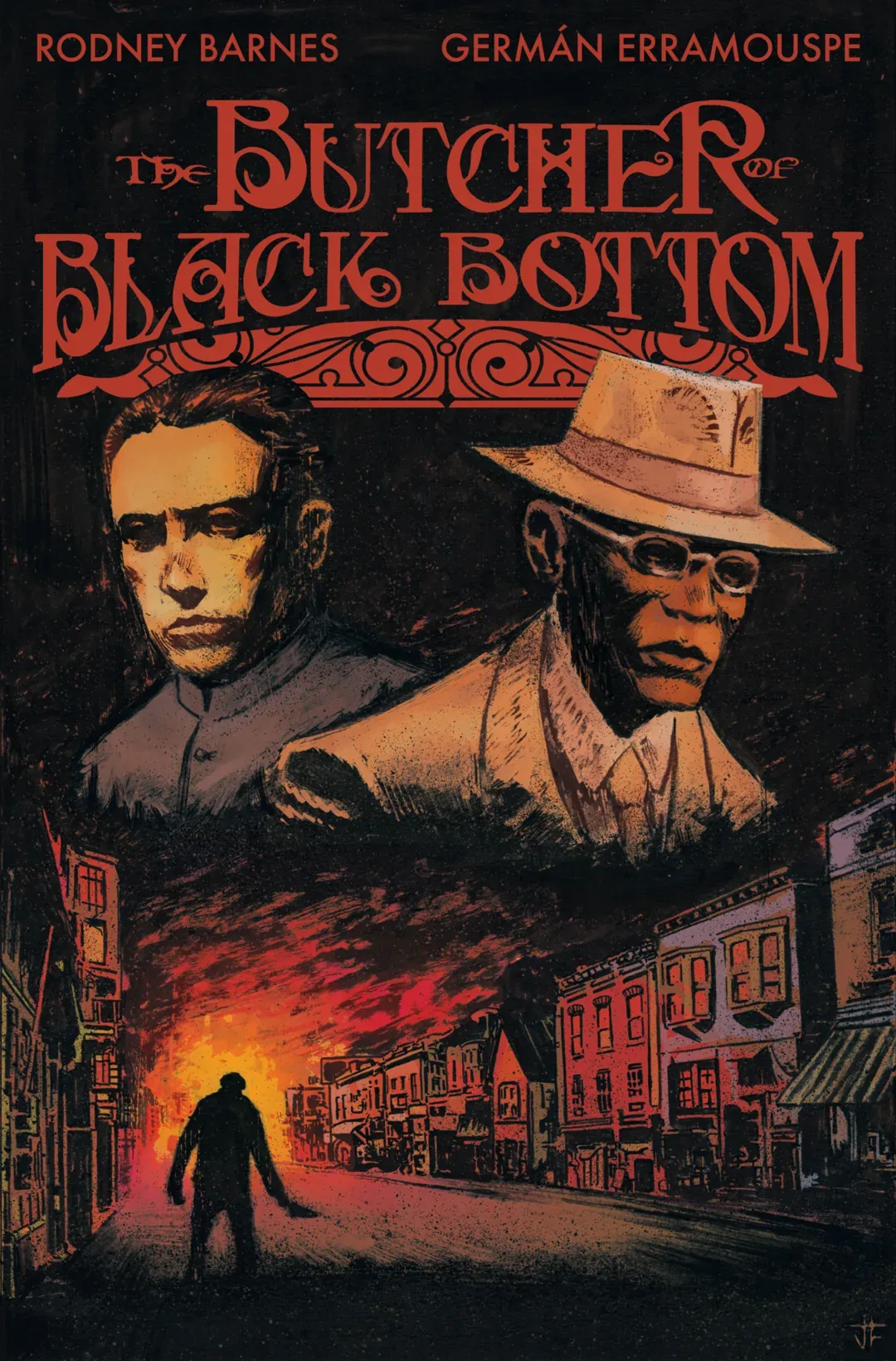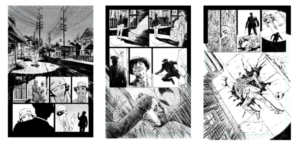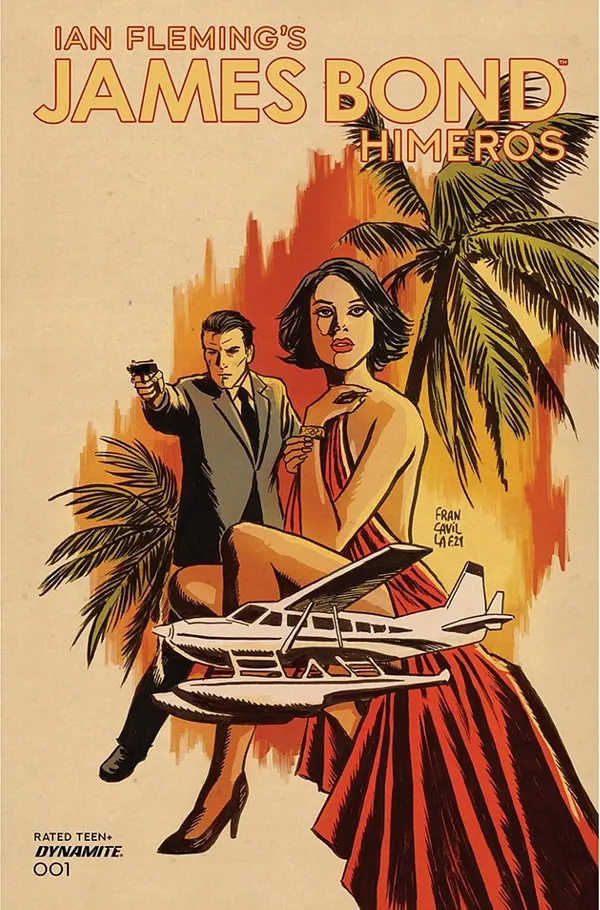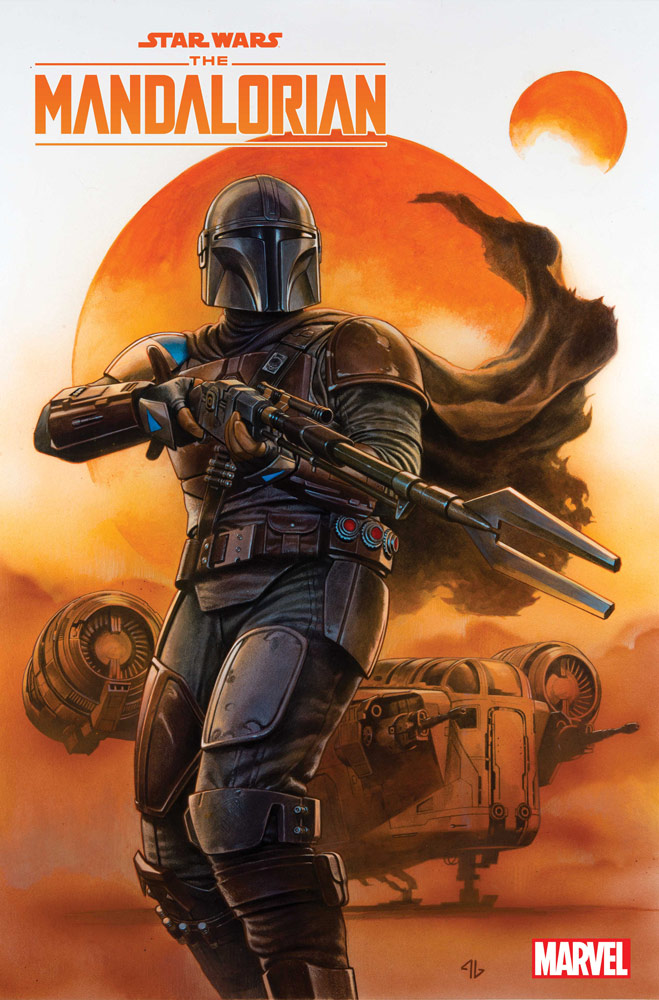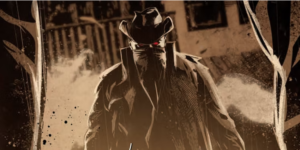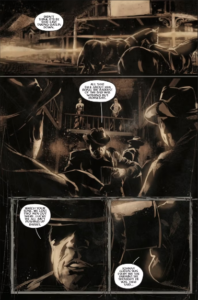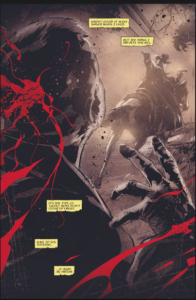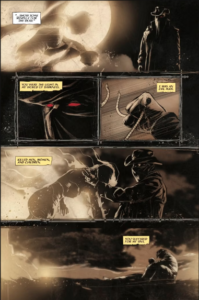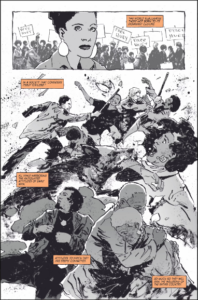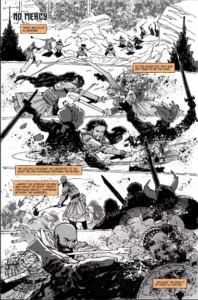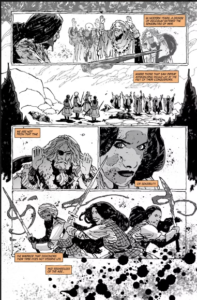KOLCHAK, THE NIGHT STALKER. 50TH ANNIVERSARY.
Moonstone, 2002
Various Authors
Publisher: James Aquilone
The potential viewing public that makes hits out of the dozens of ‘TV’ series that swirl around the well-known platforms surely have no idea who Carl Kolchak is, and indeed shouldn’t. But we must thank the Moonstone label and the publisher James Aquilone for celebrating this character and his creators and authors, and reminding us where so many myths come from that today entertain and sustain so many viewers and storytellers.
The charm of cynical, talkative, and obsessive reporter Carl Kolchak—played by Darren McGavin, whose profile has been remarkably respected for his comic book incarnation—has marked generations since he was first seen on television half a century ago. American —and from there to dozens of countries—, with a couple of brilliant films for TV — The Night Stalker and The Night Strangler— and later with a popular series in which he continued his investigation and coverage of the strangest stories and cases that confronted him with a fabulous and bizarre catalog of supernatural entities: werewolves, zombies, demons and, among many others, vampires, of course, and not forgetting a headless biker. Events that confronted him, equally, with the disbelief of a world that was falling apart, but that has continued to not accept the external agents that conspire against him – the radical differences between Mulder and Scully are a continuation of this already seminal battle.
Constructed by the journalist Jeff Rice, and defined and enriched by the great novelist Richard Matheson for the two films that launched him and his subsequent television series, Kolchak was a character and a saga that marked and captivated an audience that has not stopped growing. , for its approach to the urban world perfectly reflected through its streets, its inhabitants and with the same fears and phobias of the spectators of one —and more— decades where the horrors of real life found a figurative nuance in the threats faced by Kolchak, and that since then have been a central part of the literature that has shaped us both in fiction and in the daily news.
Since 2002, Moonstone has been in charge of publishing a good number of miniseries and graphic novels by various authors, where the mythology of this character has continued to be built. And it is now on the 50th anniversary of the character that Kolchak, the Night Stalker has been published . 50th Anniversary, a compilation of 12 new stories spread across seven decades of the character’s journalistic work, with eloquent results in some cases.
Kolchak’s chronicle of life with the supernatural starts from his early student years and continues until the beginning of this new century and millennium, with a denouement that seems to be everything: lyrical, explosive, expected, unexpected and obvious… in a certain way.
Through the stories we see certain paradigm shifts over the years, and the white tapestry that takes over the protagonist’s hair, but the professional intention of the character and, above all, the unmistakable white hat on his head as an accentuation. from their dissonant state in the face of social disbelief, they remain intact.
Listing the catwalk of monstrosities that Karl Kolchak faces during the more than 170 comic pages of this compendium, would be to spoil a good part of the surprise that it holds; but let’s say, there are interesting variations or reworkings of classics, as well as Kolchak’s confrontation with the extraordinary in historical contexts that we know, and without forgetting the revelation of how his classic hat was made and, as already mentioned, of the shocking end of Kolchak himself.
In this type of anthology we are accustomed to finding ourselves only with entertainment, so to speak; but in this case, interesting data about his life and its outcome are revealed to us; that is to say, this series of stories value entertainment and the weight of the facts for the character in the same way.
The book includes two interesting and significant introductions, one signed by James Rice and the other by Richard Christian Matheson, both authors descendants of the initiators —along with the director and producer Dan Curtis— of this mythology half a century ago on TV; and in the case of the son of the author of “I am Legend”, he also collaborates in this book with a story, which becomes his first work for a comic. Among the outstanding list of writers assembled are Peter David ( The Incredible Hulk ), Nancy A. Collins ( Sunglasses After Dark, Swamp Thing ), Kim Newman ( Anno Dracula ), Steve Niles ( 30 Days of Night ), Rodney Barnes ( Killadelphia, Blacula Return of the King) and, among others, Aquilone himself.
And in the field of drawing, artists such as JKWoodward, Szymon Kudranski, Colton Worley, Warwick Cadwell-Johnson, Paul McCaffrey and, among others, Gabriel Hardman, who writes and illustrates, offer notable translations into drawings.
In Kolchak, the Night Stalker. 50th Anniversary we find a remarkable choir of different voices that unite talents for a single objective: to celebrate and highlight the work of Carl Kolchak, a journalist who always sought the truth… however extraordinary it may seem.
Kolchak, the Night Stalker. 50th Anniversary was produced thanks to a successful Kickstarter campaign, but for anyone who couldn’t purchase it at the time, you can do so directly here: Monstrousbooks.com .
BLACULA, RETURN OF THE KING
Zombie Love Studios
By Rodney Barnes and Jason Shawn Alexander
1972. While Carl Kolchak confronts a vampire of European blood in Las Vegas through the television screen, in a good number of movie theaters a new anti-hero emerges in the framework of blaxploitation: Blacula… indeed, a vampire for consumption of a very specific sector of moviegoers, although radicalizing the aristocratic character of the figure of the vampire towards that of African slavery.
Thus, the African prince Mamuwalde —interpreted by William Marshall— who in 1780 went to Transylvania accompanied by his wife, Luva, to ask Count Dracula on an official visit to end his slave trade, in response he was subdued and turned into a vampire by the Count himself, who condemns him to eternal life locked in a sarcophagus while he listens to his wife die and, between Dracula’s laughs, hears him baptize him with the nickname Blacula.
In just a few minutes of prologue, the film directed by William Craine, and written by Joan Torres, Raymond Koening and Richard Glounor, perfectly summarizes the historical rancor of a culture and race whose grief and courage could be symbolized by the mockery of ” King of Vampires.”
We go back to 1972, and Mamuwalde is randomly revived and causing a vampire epidemic in the streets of Los Angeles, which confronts him with his own race and without being able to put aside a curse that he has carried for centuries.
Although Blacula , the film, was largely a middling success of its time, it has been a source of reference and inspiration ever since. The writer Rodney Barnes is one of the spectators who was marked by this film experience, and today, half a century after the premiere of this work, he is making a spectacular comic book sequel, backed by the explosive illustrations of Jason Shawn Alexander.

Blacula, Return of the King thus becomes Blacula’s third resurrection (taking into account the film sequel Scream Blacula Scream , from 1975), and a new confrontation with modernity and its oldest enemy.
![CULVER CITY, Calif. – Malik Books will host a meet and greet with award-winning screenwriter Rodney Barnes this Thursday, Feb. 23 at their location inside of Fox Hills Mall at 7 p.m. Barnes was a producer and writer for the Damon Wayans show My Wife and Kids, from 2001 to 2005. He was then a co-executive producer and [...] CULVER CITY, Calif. – Malik Books will host a meet and greet with award-winning screenwriter Rodney Barnes this Thursday, Feb. 23 at their location inside of Fox Hills Mall at 7 p.m. Barnes was a producer and writer for the Damon Wayans show My Wife and Kids, from 2001 to 2005. He was then a co-executive producer and [...]](https://img-s-msn-com.akamaized.net/tenant/amp/entityid/AA17LL86.img?w=534&h=252&m=6&x=438&y=71&s=187&d=187)



